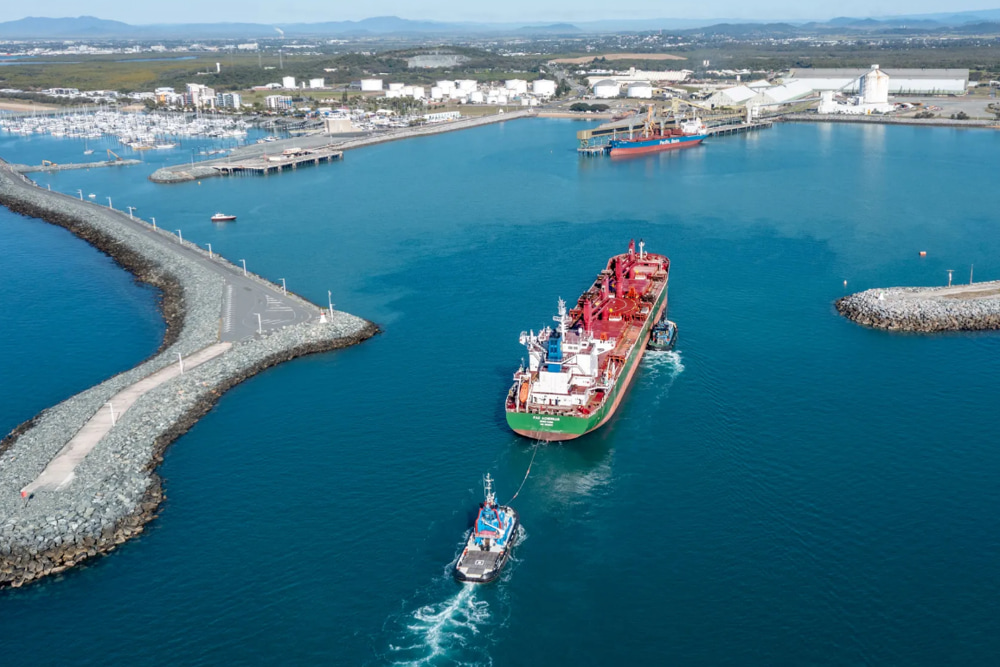
A new economic impact study has revealed that Queensland’s ports of Mackay, Hay Point, and Abbot Point contribute an extraordinary $31.7 billion annually to the state’s Gross State Product (GSP), underlining their critical role in driving the economy.
The report, conducted by independent experts Prominence and commissioned by North Queensland Bulk Ports (NQBP), also highlights that these ports support approximately 40,000 jobs across industries such as mining, construction, transport, and wholesale trade.
NQBP CEO Brendan Webb emphasised the significance of these findings, noting that the Mackay Isaac Whitsunday region is a vital economic engine for Queensland.
“The Port of Hay Point, one of the largest metallurgical coal ports globally, injects over $21 billion annually into the Queensland economy and supports around 30,000 jobs,” Webb stated.
He also highlighted the Port of Mackay’s dual role in supporting the mining supply chain and anchoring the region’s sugar industry, which contributes more than $1 billion annually and sustains over 2,000 jobs.
Meanwhile, the Port of Abbot Point, Queensland’s northernmost coal export terminal, contributes nearly $10 billion annually and supports more than 8,000 jobs.
The study further revealed that when combined with NQBP’s fourth port at Weipa, the total contribution of these ports rises to $35 billion annually to Queensland’s GSP.
Together, these ports facilitate more than 47,000 jobs across the state and handle over 54 per cent of Queensland’s international trade by volume.
The annual trade passing through NQBP ports is valued at approximately $53 billion and amounts to around 150 million tonnes in volume.
Metallurgical coal dominates this trade at 86 per cent of total volume, followed by thermal coal, bauxite, and sugar.
The employment benefits are most pronounced in regions where metallurgical coal exports drive significant economic activity.
Additionally, import volumes have grown by over 25 per cent since 2019 at the Port of Mackay, with increased diversity in imported goods, such as break-bulk cargo alongside fuel.
Looking ahead, NQBP is exploring capital improvements at the Port of Mackay to enable further economic development in the Greater Whitsunday region.
Proposed investments include extending Wharf 1’s cargo-handling capabilities and establishing purpose-built laydown areas to support industries like mining, agriculture, renewable energy, and tourism.
Webb expressed optimism about these developments, stating: “These investments will provide competitive port services for existing industries while instilling confidence in proponents of new projects.”
The report also drew praise from industry leaders. Ports Australia CEO Mike Gallacher described it as a critical initiative that underscores NQBP’s role in supporting both regional and state economies.
Dean Kirkwood, General Manager of the Resource Industry Network, emphasised that these ports are indispensable infrastructure enabling Queensland’s resource sector to thrive.
Webb credited the success of NQBP’s operations to the dedication of workers across its supply chains — from terminal operators to miners and cane growers — who ensure safe and efficient port operations.
“Our ports are gateways to prosperity,” he said.
“With a strong track record of infrastructure improvements over the past decade, we will continue investing in our ports and people to secure a bright future for Queensland.”
This study cements NQBP’s position as a cornerstone of Queensland’s economy, accounting for 44 per cent of GSP contributions from all state ports while facilitating essential trade that benefits communities locally and globally.






